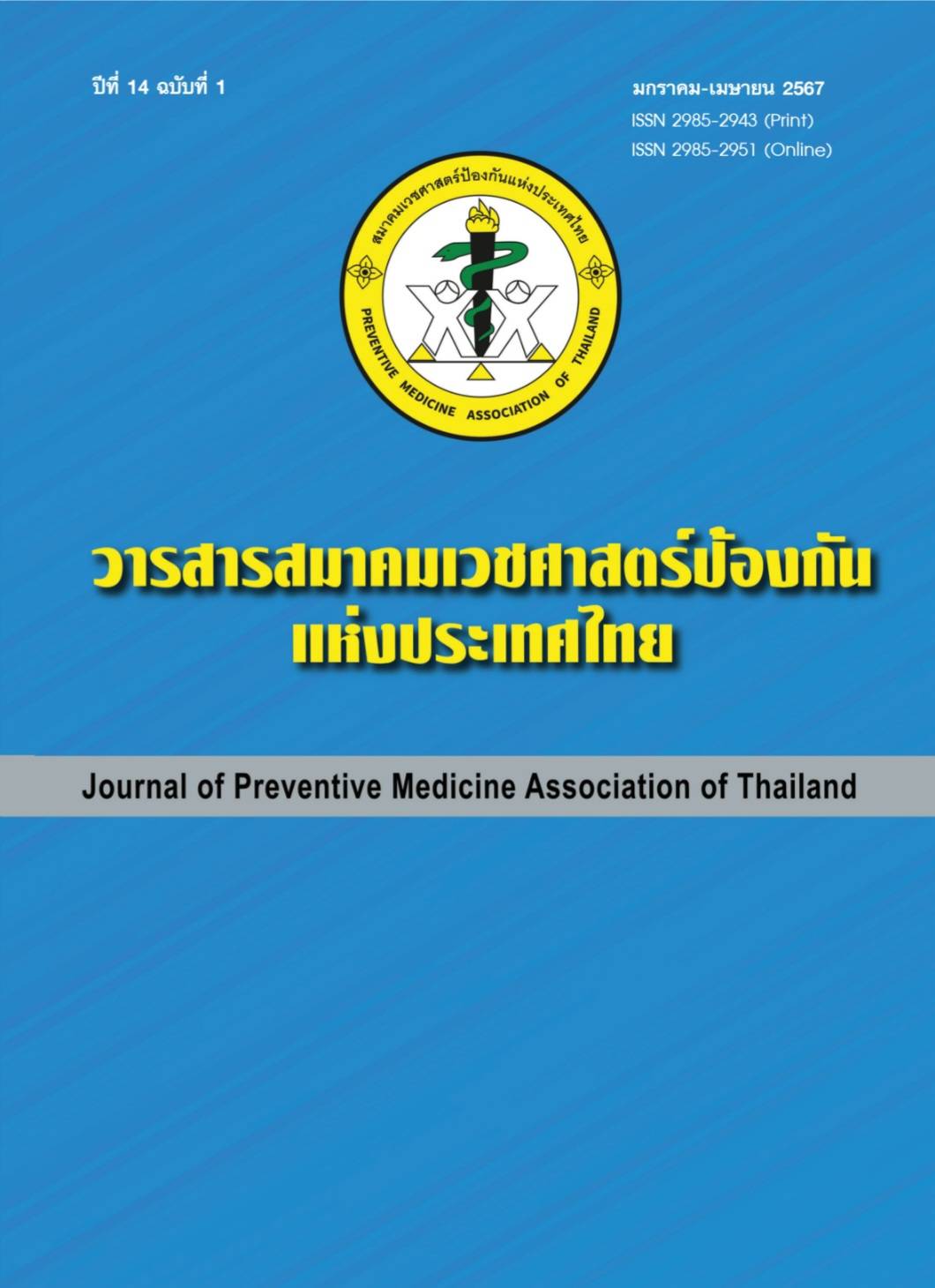การพัฒนารูปแบบการพยาบาลผู้ป่วยบาดเจ็บศีรษะที่ได้รับการผ่าตัดเปิดกะโหลกศีรษะ โรงพยาบาลอุทัยธานี
คำสำคัญ:
การพัฒนารูปแบบ, ผู้ป่วยบาดเจ็บศีรษะ, การผ่าตัดเปิดกะโหลกศีรษะบทคัดย่อ
วัตถุประสงค์: เพื่อพัฒนารูปแบบการพยาบาลผู้ป่วยบาดเจ็บศีรษะที่ได้รับการผ่าตัดเปิดกะโหลกศีรษะ โรงพยาบาลอุทัยธานี โดยประยุกต์ใช้รูปแบบการส่งเสริมการฟื้นตัวหลังผ่าตัด และเพื่อศึกษาผลลัพธ์การใช้รูปแบบการพยาบาลผู้ป่วยบาดเจ็บศีรษะที่ได้รับการผ่าตัดเปิดกะโหลกศีรษะ วิธีการศึกษา: เป็นการวิจัยและพัฒนา กลุ่มตัวอย่างแบ่งเป็น 2 กลุ่ม คือ พยาบาลวิชาชีพที่มีประสบการณ์ทำงานและดูแลให้การพยาบาลผู้ป่วยบาดเจ็บศีรษะที่ได้รับการผ่าตัดเปิดกะโหลกศีรษะ จำนวน 30 คน และ เวชระเบียนผู้ป่วยที่ได้รับการผ่าตัดเปิดกะโหลกศีรษะ จำนวน 30 คน โดยการเลือกสุ่มกลุ่มตัวอย่างแบบเจาะจง วิจัยออกเป็น 3 ระยะ ดังนี้ ระยะที่ 1 ศึกษาสถานการณ์การพยาบาลผู้ป่วยบาดเจ็บศีรษะที่ได้รับการผ่าตัดเปิดกะโหลกศีรษะ โรงพยาบาลอุทัยธานี เครื่องมือวิจัยประกอบด้วย แบบบันทึกข้อมูลและแนวทางการสนทนากลุ่ม ใช้การสัมภาษณ์แบบกึ่งโครงสร้าง ระยะที่ 2 พัฒนารูปแบบการพยาบาลผู้ป่วยหลังผ่าตัดเปิดกะโหลกศีรษะ โรงพยาบาลอุทัยธานี ดำเนินการใช้รูปแบบการพยาบาลฯ เครื่องมือวิจัยประกอบด้วย (1) รูปแบบการพยาบาลผู้ป่วยบาดเจ็บศีรษะที่ได้รับการผ่าตัดเปิดกะโหลกศีรษะ โรงพยาบาลอุทัยธานี ตามแนวคิดการส่งเสริมการฟื้นตัวหลังผ่าตัดหรือ Enhanced Recovery After Surgery (ERAS) ระยะที่ 3 ศึกษาผลลัพธ์การใช้รูปแบบฯ เครื่องมือวิจัยประกอบด้วย (1) แบบสอบถามเกี่ยวกับข้อมูลทั่วไปของพยาบาลวิชาชีพ (2) แบบประเมินการปฏิบัติการพยาบาลผู้ป่วยบาดเจ็บศีรษะที่ได้รับการผ่าตัดเปิดกะโหลกศีรษะ ประกอบด้วย การพยาบาลก่อนการผ่าตัด การพยาบาลขณะผ่าตัด การพยาบาลหลังผ่าตัด และ (3) แบบบันทึกผลลัพธ์ด้านผู้ป่วยเก็บข้อมูลจากเวชระเบียน โดยเครื่องมือวิจัยผ่านการตรวจสอบความตรงของเนื้อหาด้วยค่าดัชนีความสอดคล้องรายข้อเท่ากับ 1.00 และใช้ค่าสัมประสิทธิ์แอลฟาครอนบาคหาความเชื่อมั่นที่ 0.95 – 0.98 วิเคราะห์ข้อมูลเชิงคุณภาพโดยการวิเคราะห์เชิงเนื้อหาและสร้างข้อสรุป วิเคราะห์ข้อมูลเชิงปริมาณด้วยสถิติเชิงพรรณนา Paired t-test และ Independent t-test รวบรวมข้อมูล ระหว่างเดือน มิถุนายน ถึงธันวาคม 2566 ผลการศึกษา: รูปแบบการปฏิบัติการพยาบาลผู้ป่วยบาดเจ็บศีรษะที่ได้รับการผ่าตัดเปิดกะโหลกศีรษะ ประกอบด้วย การพยาบาลก่อนการผ่าตัด การพยาบาลขณะผ่าตัด การพยาบาลหลังผ่าตัด ผลลัพธ์การใช้รูปแบบฯ ด้านพยาบาลวิชาชีพ พบว่าการปฏิบัติการพยาบาลผู้ป่วยบาดเจ็บศีรษะที่ได้รับการผ่าตัดเปิดกะโหลกศีรษะ หลังการใช้รูปแบบฯ เพิ่มสูงกว่าก่อนการใช้มีความแตกต่างกันอย่างมีนัยสำคัญทางสถิติ (p < .001) ทุกด้าน ผลลัพธ์ฯ ด้านผู้ป่วย หลังการใช้รูปแบบดีขึ้นกว่าก่อนการใช้รูปแบบ ได้แก่ การเสียชีวิตหลังผ่าตัด วันนอนเฉลี่ย และการผ่าตัดซ้ำฯ ลดลง ส่วนการติดเชื้อแผลผ่าตัด พบว่าไม่แตกต่าง สรุป: การพัฒนารูปแบบการพยาบาลผู้ป่วยบาดเจ็บศีรษะที่ได้รับการผ่าตัดเปิดกะโหลกศีรษะ โรงพยาบาลอุทัยธานี โดยประยุกต์ใช้รูปแบบการส่งเสริมการฟื้นตัวหลังผ่าตัด (ERAS) สามารถนำไปประยุกต์ใช้กับการพยาบาลผู้ป่วยบาดเจ็บระบบอื่นในร่างกายที่ต้องได้รับการผ่าตัด
เอกสารอ้างอิง
World Health Organization. World report on road traffic injury prevention: summary [Internet]. 2018 [cited 2023 Jan 1]. Available from: https://www.books.google.co.th/books?isbn=1437904068
สำนักโรคไม่ติดต่อ กรมควบคุมโรค. สถานการณ์อุบัติเหตุทางถนน ปี 2563 [อินเทอร์เน็ต]. 2563 [เข้าถึงเมื่อ 1 ม.ค. 2566]. เข้าถึงได้จาก: http://www.thaincd.com/document/file/info/injured/
โรงพยาบาลอุทัยธานี. รายงานประจำปี พ.ศ.2563-2565. อุทัยธานี: โรงพยาบาลอุทัยธานี; 2565.
จันทนา คล้ายเจริญ, วรรณนิศา ชัยวิสิทธิ์. การพยาบาลผู้ป่วยทีได้รับการผ่าตัดเนื้องอกสมองขณะผู้ป่วยรู้สติ (Awake craniotomy). เวชบันทึกศิริราช 2560;10(2):109-14.
ศรีสุดา เวียงนนท์. การพยาบาลผู้ป่วยเลือดออกในสมองที่ได้รับการผ่าตัดเปิดกะโหลกศีรษะ: กรณีศึกษา 2 ราย. วารสารสุขภาพและสิ่งแวดล้อมศึกษา 2564;6(4):83-95.
Bisch SP, Jago CA, Kalogera E, Ganshorn H, Meyer LA, Ramirez PT, et al. Outcomes of enhanced recovery after surgery (ERAS) in gynecologic oncology – a systematic review and meta-analysis. Gynecol Oncol 2021;161(1):46-55.
Stumpo V, Staartjes VE, Quddusi A, Corniola MV, Tessitore E, Schroder ML, et al. Enhanced recovery after surgery strategies for elective craniotomy: a systematic review. J Neurosurg 2021;135(6):1857-81.
Fearon KCH, Ljungqvist O, Meyenfeldt MV, Revhaug A, Dejong CHC, Lassen K, et al. Enhanced recovery after surgery: a consensus review of clinical care for patients undergoing colonic resection. Clin Nutr 2005;24(3): 466-77.
ดาวน์โหลด
เผยแพร่แล้ว
รูปแบบการอ้างอิง
ฉบับ
ประเภทบทความ
สัญญาอนุญาต
ลิขสิทธิ์ (c) 2024 สมาคมเวชศาสตร์ป้องกันแห่งประเทศไทย

อนุญาตภายใต้เงื่อนไข Creative Commons Attribution-NonCommercial-NoDerivatives 4.0 International License.
บทความที่ลงพิมพ์ในวารสารเวชศาสตร์ป้องกันแห่งประเทศไทย ถือเป็นผลงานวิชาการ งานวิจัย วิเคราะห์ วิจารณ์ ตลอดจนเป็นความเห็นส่วนตัวของผู้นิพนธ์ กองบรรณาธิการไม่จำเป็นต้องเห็นด้วยเสมอไป และผู้นิพนธ์จะต้องรับผิดชอบต่อบทความของตนเอง






